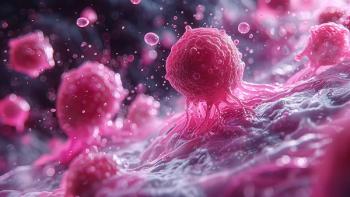
- BioPharm International-11-01-2010
- Volume 23
- Issue 11
Systematic Approaches to Develop Chemically Defined Cell Culture Feed Media
Making chemically defined media work.
ABSTRACT
Developing chemically defined (CD) media suited for multiple Chinese hamster ovary (CHO) cell lines can be a challenging and extensive process because of the complexity of cellular metabolism and the associated phenotypic variations observed in cell lines, even when derived from the same parental cell line. In this article, we present certain systematic approaches to develop CD cell culture media. Two feed media development applications have been explored, each with distinct goals. First, a systematic approach was used to develop a platform CD feed medium, which can be used for many antibody producing CHO cell lines without any major cell line-specific optimization. Second, an iterative optimization approach was applied to develop an enriched feed media tailored to individual cell lines, to achieve higher titers.
As cell culture technology has matured, platform processes have become the standard in the biotechnology industry, particularly in early-stage development, to enable the rapid production of toxicology and Phase 1 and 2 clinical material with acceptable product quality attributes. The cell culture platform often consists of a standard host cell, expression vector, transfection and selection methods, cell culture media and culture techniques with appropriate process control, and scale-up methodologies. An ideal cell culture platform medium not only enables rapid cell culture process development, but also could provide predictable process performance at different production scales and thereby aid in the development of downstream process platforms as well.
(GENENTECH, INC.)
The majority of the biopharmaceutical industry currently is using fed-batch cultures of animal cells as the platform technology to synthesize biopharmaceutical proteins because it offers the benefits of high yields and operational simplicity.1 A fed-batch process requires a basal medium to support cell growth and productivity and a feed medium to prevent nutrient depletion, extend culture longevity, and maintain high volumetric productivity. A typical basal medium contains 50–70 chemical components, including carbon sources, amino acids, vitamins, salts, and trace elements. Feed media usually contain fewer components than the basal media, but at higher concentrations.2 Cell culture media have evolved over the years from serum-containing to chemically defined (CD) formulations.3 Recent advances in cell culture media optimization have resulted in higher volumetric productivities in fed-batch processes. Cell culture media optimization is an integral part of mammalian cell culture process development and optimization, which support all activities from cell line development and clone selection to process optimization and scale-up. Cell culture process development starts with cell line generation and selection, followed by process and media optimization in scale-down systems, including 96-well plates, shaker flasks, and bench-scale bioreactors. After the process conditions are defined, the process often is transferred to the pilot scale to test scalability and produce material for preclinical toxicology studies. Subsequently, the process is further scaled-up to generate clinical material under current good manufacturing practices (cGMP) regulations (Figure 1). The ideal cell culture medium should support robust cell growth, productivity, and product titer and quality goals, both during development and process transfer to different scales and manufacturing sites.
Figure 1. A platform cell culture medium, integrated from early cell line development activities to clinical production, streamlines process development to meet aggressive timeline
Historically, bovine serum had been a popular supplement in cell culture media because it improves cell growth and productivity. Regulatory agencies have encouraged the industry to avoid animal-derived supplements to mitigate the risk of introducing adventitious agents such as viruses and prions.4,5 Protein hydrolysates, which can provide similar benefits as serum, can be animal-derived from bovine milk or tissues, or non-animal–derived from yeast, cotton seed, soy, wheat, or other plant sources. Some disadvantages of hydrolysates include lot-to-lot variability leading to process and product inconsistencies. The undefined chemical composition of hydrolysates can lead to challenges in process understanding, making further medium optimization difficult.6 Therefore, many biopharmaceutical companies are transitioning to CD media formulations and a few vendors now also offer CD basal and feed media.7 We observed that the current version of our peptone-containing media, when used with most cell lines, lead to robust cell culture performance at different scales and generated titers greater than 1 g/L for most of our in-house cell lines. After removing the peptone from our platform feed medium, a systematic approach was applied to develop a suitable CD platform feed medium. An iterative optimization approach was then applied to develop enhanced feeds tailored to individual cell lines to achieve higher titers.
A SYSTEMATIC APPROACH TO MEDIUM DEVELOPMENT
Establishing Criteria for Platform Medium and Model Cell Lines
Several criteria need to be considered before developing a CD platform medium. Robustness of the medium must be demonstrated for cell line development applications, clone selection, seed and inoculum trains, and in production cultures using representative cell lines. These model cell lines should be identified to include diversity in properties such as host cell, expression plasmid, selection and amplification methods, growth, metabolism, and specific productivity (Qp). In addition, manufacturability and scalability criteria must be met, including consistent preparation, filtration methods, and stable shelf life. Moreover, titers should be comparable to that achieved in the peptone-containing platform medium, with acceptable product quality profiles (Figure 2).
Figure 2. Considerations for developing a robust platform chemically defined medium
Platform Medium Development
Because of the complexity of cell culture media formulations, it was not practical to use Design of Experiment (DOE) approaches to simultaneously optimize all compositions. Instead, we applied a step-by-step optimization strategy by starting with media screening, followed by subgroup titration, single and multiple component titration, and finally conducting confirmation studies (Figure 3).
Figure 3. A systematic medium development strategy
Starting point: An in-house chemically-defined feed (CDF), previously used in combination with peptone, was chosen as the starting point after wide-ranging screening experiments that compared this with other in-house and commercially available feed media. This medium had a simple proprietary formulation, which made optimization less complex. The overall strategy involved enriching this feed with essential nutrients previously shown to improve performance for many cell lines. The same CD basal medium, which was chosen after extensive small-scale screening studies in batch mode, was used for all experiments conducted for feed optimization.
Identifiying key subgroups: To quickly optimize the current CDF, we used an optimization strategy that involved enriching the feed medium with subgroups of media components. Approximately 30 media components were divided into three different subgroups, namely amino acids, vitamins, and an "others" sub-group that included nucleosides, fatty acids, amongst other components. Instead of working with individual components, these subgroups were titrated into the CDF in shaker flasks to reduce experimental complexity. Traditionally, components have been individually titrated at various concentrations and optimized. Our subgroups strategy was less labor intensive, demonstrated the importance of the vitamin subgroup concentration, and helped identify the optimal vitamin subgroup concentration. The newly adjusted concentration of vitamins resulted in improved cell growth and extended viability, even for a cell line that exhibited poor growth and high lactate synthesis (Figure 4).
Figure 4. For two different model cell lines tested in shake flasks, vitamin subgroup titration studies demonstrated similar growth compared to the peptone-containing process
Identification and optimization of key components: To complement shaker flask studies, a modified version of the CDF was evaluated in 2-L scale-down bioreactors using a cell line that exhibited robust growth and productivity. Although shaker flasks or high-throughput systems are more powerful for screening a larger number of medium components or cell lines, small-scale bioreactors with pH and dissolved oxygen control capabilities are more representative of conditions encountered in large-scale processes used in clinical or commercial manufacturing. The bioreactor process using the vitamin-enriched feed medium was conducted for 14 days, and supernatant samples were collected daily to quantify specific components in the spent medium and to determine the specific amino acid consumption and production rates. Based on specific amino acid consumption rates, key amino acid concentrations were adjusted in the feed medium. Supplementing CDF medium with vitamins and amino acids resulted in higher cell density, specific productivity, and overall final titers. Key amino acids asparagine, tryptophan, and valine were not depleted during production.
Figure 5. For 10 different model cell lines tested in 2-L bioreactors, the average titer in the chemically defined (CD) medium was 30% higher than the peptone-containing process
Confirmation: Multiple cell lines previously used in early-stage and late-stage projects were tested in 2-L scale-down bioreactors for confirmation that the newly developed CDF was optimal for a variety of cell lines. Compared to the peptone containing medium, the CD medium resulted in an average titer improvement of 30%. Among the 10 cell lines tested, only three had lower titers in CD media (Figure 5). It was worth pointing out that the cell lines shown in Figure 5 also were preselected in a peptone-containing medium. To implement the new CD medium in a manufacturing facility, there are many process scalability items to be tested, such as large-scale medium preparation and cell culture process performance. An example of such a scale-up run using a late-stage cell line at a 400-L scale is shown in Figure 6. In this case, titer, cell growth, and metabolism profiles were comparable between the 2-L and 400-L scales.
Figure 6. Scale-up of the chemically defined medium from 2 to 400 L (data shown for 2 Ã 2 L and 1 Ã 400 L runs)
Product quality: Changing medium formulations may introduce challenges in comparability of product quality. It is necessary to ensure that the transition from peptone-containing to CD media did not cause major product quality changes, especially for the molecules already in the clinical development stage. Our results show that the product quality differences were acceptable in terms of protein aggregation level, glycosylation pattern, and charge variants (Table 1). Furthermore, we have demonstrated that the CD medium gave consistent product quality profiles at different scales throughout cell line development, process development, and manufacturing stages.
Table 1. For five different model cell lines tested for product quality, aggregate levels, glycosylation patterns, and charge variants have minor and acceptable differences
Enhanced Feed Medium and Process Development
Although high titers are typically not required for early-stage development because of relatively low material requirements in early clinical stages, they often are desirable for some late-stage processes because of market demand or manufacturing capacity constraints. There are two reasons to develop enriched media. First, to gain a better understanding of the determinants for high volumetric productivity in cell culture fed-batch processes. Second, to develop a general cell-line–specific medium optimization methodology to achieve higher titers.
Although a platform process emphasizes simplicity of feeding strategy and ease of implementation during manufacturing, it might not lead to the maximum possible volumetric productivity that might be achieved with any specific cell line. The aim of developing the enhanced process was to achieve higher titers with a specific cell line through feed media optimization and the development of feeding strategies.
Iterative process: Enhanced feed medium optimization was achieved through an iterative process to customize the formulation for specific cell lines. In this approach, metabolism and other key performance indicators were monitored to determine levels of lactate, ammonia, and osmolality. Nutrient and metabolite consumption rates from fed-batch bioreactor experiments were analyzed and used to adjust the feed formulation and feeding strategy in accordance with the nutrient requirements for a specific cell line. To achieve this, daily supernatant spent medium samples were collected and used to obtain amino acid and vitamin consumption profiles. With accumulating components reduced or omitted, more essential components could be added. The feed medium formulation was adjusted when components were either increased or reduced. In this case, amino acids and vitamins were further enriched. Because of variability associated with cell growth processes and the measurement of nutrient consumption rates, this had to be conducted iteratively to adequately optimize the culture medium. Thus, the feed medium was reformulated for each subsequent study, with the goal of maintaining a high specific productivity by supplementing key nutrients at desired levels. In our study this was achieved by 2–3 rounds of optimization studies (Figure 7).
Figure 7. Development of enhanced feed medium and feeding strategy in an iterative optimization process
The enhanced fed-batch process was operationally more complicated than the platform fed-batch process. In both cases, however, the timing of specific volume additions needed to be optimized for each cell line, but for the enhanced process, the feed volume was calculated daily based on a combination of viable cell counts, cell size, and viability. This iterative process for reformulating feed and feeding strategy was tested on two model cell lines with different growth and productivity characteristics. MAb A exhibited high growth but average specific productivity, whereas MAb B exhibited low growth but high specific productivity. The customized enhanced feed resulted in improved cell growth and significant titer increase. Titers as high as 9 g/L (MAb A) and 6.7 g/L (MAb B) were achieved compared in the platform medium to 4.2 and 4.6 respectively (Figure 8). Our results indicate that compared with the platform feeding strategy, the enhanced feeding strategy prevented excessive osmolality increases, nutrient depletion, and enhanced volumetric productivity.
Figure 8. Feed optimization by the iterative process (enhanced feed) resulted in significant titer increases for two model cell lines compared to the platform feed
DISCUSSION
Using a CD medium in cell development workflows could potentially lead to more comparable results between cell line development and early-stage process development by minimizing changes or eliminating cell adaptation when using a different production medium. Some cell lines also can adapt slowly to CD media during the later stages of development for inoculum expansion and protein production.8 To transition from early-stage to late-stage processes, cell-line–specific process optimization is more straightforward in CD media compared to media containing undefined raw materials, as exact concentrations of all components are known.
It was essential to balance solubility and osmolality of the platform basal medium for ease of use, manufacturability, and long-term storage. The enriched feed medium, on the other hand, was formulated to minimize the dilution of culture volume during feeding without resulting in an excessive increase in osmolality. Excessive concentration of feed media should be avoided because this could lead to the precipitation of specific media components if their concentration exceeds their solubility.
Developing a CD feed platform and enhanced feed formulations for fed-batch processes resulted in overall benefits with more favorable metabolic profiles and culture growth. Interestingly, tested cell lines that were lactogenic in the peptone-containing medium exhibited a shift from lactate production to consumption during the later stage of cultures in the CD medium. At the end of these processes, most cell lines had almost undetectable lactate concentrations that resulted in higher peak cell densities and extended viability during production. The importance of the newly adjusted amino acid and vitamin concentrations were clearly identified to improve lactate metabolism, enhance growth, extend viability, and increase volumetric production rates.9,10
CONCLUSION
Systematic feed medium development approaches were successfully used to enable the transition from a peptone-containing process to a process using chemically-defined basal and feed media. An iterative process was used to increase titers based on the metabolic needs of specific cell lines. In addition, we have successfully conducted filterability, medium preparation, and scale-up studies. These CD formulations have the potential to increase process robustness, generate higher titer processes with acceptable product quality, and be used for further medium optimization efforts.
ACKNOWLEGEMENTS
The authors would like to acknowledge the contributions of Gayle Derfus, Roberto Flores, Jennifer Autsen, Joana Caria, Dacia Brooks, Masaru Shiratori, and Robert Shawley for their guidance, ideas, and support.
Efren Pacis is a senior research associate, Jincai Li is a senior engineer, Ashraf Amanullah is a director, and Feng Li is a senior engineer, all at Oceanside Pharma Technical Development, Genentech, Inc. Oceanside, CA, 760.231.2127,
REFERENCES
1. Fike R. Nutrient supplementation strategies for biopharmaceutical production, Part 1: Identifying a nutrient supplementation formulation. BioProcess Int. 2009;7(10): 44–51.
2. Fike R. Nutrient supplementation strategies for biopharmaceutical production, Part 2 Feeding for optimal recombinant protein production. BioProcess Int. 2009;7(11):46–52.
3. Vijayasankaran N Li J, Shawley R, Chen A, Shiratori M, Gawlitzek M, Li F, Kiss R, Amanullah A. Animal cell culture media. In: Flickinger MC, ed. Encyclopedia of Industrial Biotechnology, Bioprocess, Bioseparation, and Cell Technology. New York: John Wiley & Sons, Inc. 2010; p. 261–75.
4. Heidemann R, Zhang C, Qi H. Larrick Rule J, Rozales C, Park S, Chuppa S, Ray M, Michaels J, Konstantinov K, Naveh D. The use of peptones as medium additives for the production of a recombinant therapeutic protein in high density perfusion cultures of mammalian cells. Cytotechnol. 2000;32(2):157–67.
5. Merten, OW. Virus contaminations of cell cultures —A biotechnological view. Cytotechnol. 2002;39(2):91–116.
6. Grosvenor S. The role of media development in process optimization: an historical perspective. BioPharm Int Suppl. Guide to Protein Production. 2008 Jun: pp 28–36.
7. Hodge G. Media development for cell Culture. Biopharm Int. 2005;18(5):54–57 .
8. Arunakumari A, Dai X, Goldstein J, Kloth C, Ghebremariam H, MacIsaac G, Wagner M. The impact of cell culture medium on cell line and process development and timelines and strategies. BioPharm Int Suppl. Advances in Fermentation and Cell Culture: the keys to upstream productivity; 2009 June: pp. 4–15.
9. Ishaque A, Al-Rubeai M. Role of vitamins in determining apoptosis and extent of suppression by bcl-2 during hybridoma cell culture. Apoptosis 2002;7(3):231–9.
10. Ducommun P, Ruffieux PA, von Stockar U, Marison I. The role of vitamins and amino acids on hybridoma growth and monoclonal antibody production. Cytotechnol. 2001;37(2):65–73.
Articles in this issue
about 15 years ago
BioPharm International, November 2010 Issue (PDF)about 15 years ago
Time to Revisit Supplier Quality Managementabout 15 years ago
Biosimilars Regulation in the US: The Challengesabout 15 years ago
Managing Raw Materials in the QbD Paradigm, Part 1: Understanding Risksabout 15 years ago
Biotech Manufacturers Anticipate CER Challengesabout 15 years ago
A Dizzying CourseNewsletter
Stay at the forefront of biopharmaceutical innovation—subscribe to BioPharm International for expert insights on drug development, manufacturing, compliance, and more.




